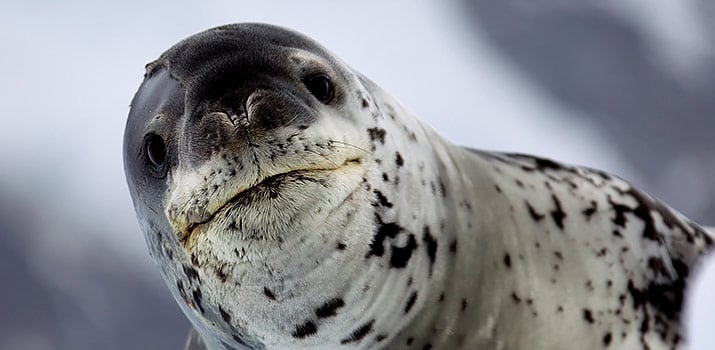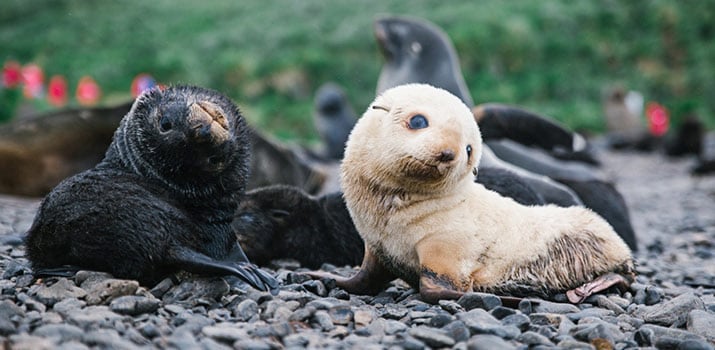Top 10 Scientific Discoveries in Antarctica
8 December, 2022

Here's still a lot of things we don't know about Antarctica. The last discovered and least explored continent of Antarctica holds many mysteries, but the things early explorers and modern-day scientists have discovered are quite amazing.
From alien-finding bacteria to animals tapping into the Earth's magnetic field, here are 10 of the top scientific discoveries in Antarctica.
Recent Discoveries in Antarctica & Antarctic Mysteries
Fossil Forests
Earlier this year scientists discovered five new fossil forests on the planet's southern-most continent. The discovery nearly doubled the amount of fossil forests scientists had believed to exist on what is now the world's largest desert. Fossils were of hardy plants that lived sometime around 300 to 200 million years ago.
Bacteria (That could help us find life on other planets)
A 2017 study from the International Journal of Science revealed the desert soils of Antarctica harbor rich microbial life that can live with very little sun, no geothermal energy, and limited nutrients. that "although more extensive sampling is required to verify whether this process is widespread in terrestrial Antarctica and other oligotrophic habitats, our results provide new understanding of the minimal nutritional requirements for life and open the possibility that atmospheric gases support life on other planets."
A Giant Hole
Scientists using satellite technology to monitor the continent spotted a hole the size of Maine in 2017, the largest found on Antarctica since the 1970s. Known as a polynya, the hole was about 30,000 square miles.
Seals With Superpowers
In 2014, the National Science Foundation announced that scientists discovered Weddell seals may have a sixth sense! "Weddell seals have biological adaptations that allow them to dive deep--as much as of hundreds of meters--while hunting, but also an uncanny ability to find the breathing holes they need on the surface of the ice..by using the Earth's magnetic field as a natural GPS."

The Ice's Age
Using a Krypton-dating technology, scientists confirmed the age of an Antarctic ice sample. The result: 120,000 year-old ice. The discovery of the ice's age allows scientists to explore Earth's climate much farther back into history and potentially lead to a better understanding of the mechanisms that cause the planet to shift into and out of ice ages.
Penguins Galore!
Early Antarctic explorers were the first to discover many of the continent's penguin species, including gentoos, emperor penguins, chinstrap penguins, and Adélie penguins.
The Coldest Temps
A study in the Geophysical Research Letters revealed satellite data collected during the Antarctic polar night from 2004 to 2016 detected temperatures of record-setting -98 degrees Celsius (-144 degrees Fahrenheit). These are the coldest temperatures ever recorded on Earth. The coldest readings were taken in tiny hollows on the Antarctic ice sheet, which can trap ultra cold and dry air.
Signs of Fire
Remote lakes in a perpetually ice-free area of Antarctica show not only the chemical signature of ancient wildfires, but also some much more recent evidence of fossil-fuel combustion, according to National Science Foundation-funded research.
The First Discovery
While Captain James Cook and his crew crossed the Antarctic Circle in 1773, they didn't set foot on or even see the continent itself. January 19, 1840, marked the first time in recorded history that people walked on the southern-most continent when Charles Wilkes led a fleet of six ships from Virginia to Australia to Antarctica over the course of two years.
The South Pole
In 1911, Norwegian explorer Roald Amundsen and four other men were the first to successfully reach the South Pole. It took the group 57 days to make their 1,800-mile trek inland once they reached the continent. Amundsen was several weeks ahead of the exploration team led by Robert Falcon Scott. The remarkable journeys and discoveries were overshadowed by the death of Scott and his team during their return.
The human desire to explore the far reaches of the planet, despite harsh conditions, tough odds, and lots of uncertainty, is truly unstoppable. Today, Antarctic travelers can still make their own discoveries and even participate in Citizen Science projects to further our understanding of the icy world on our own planet.
What will you discover?